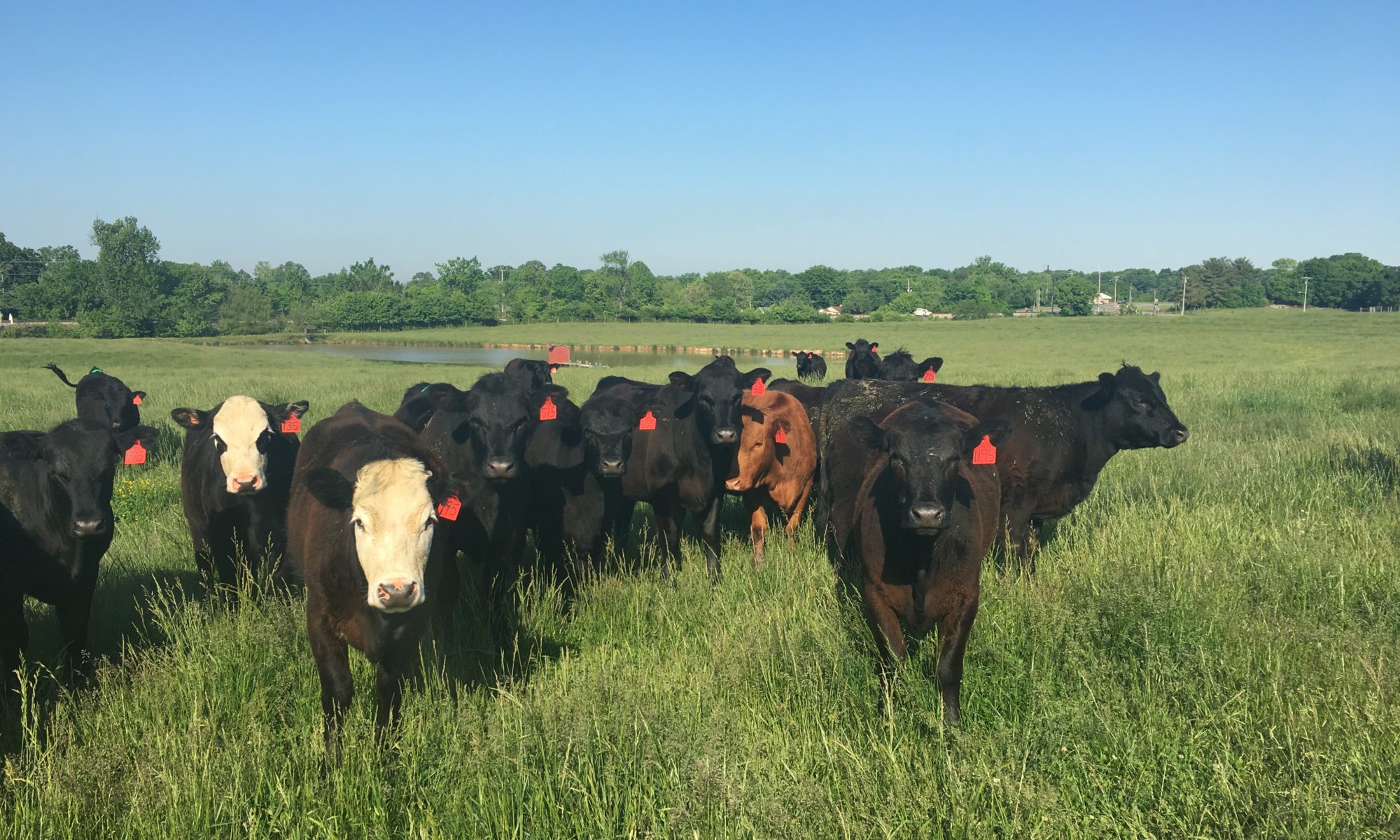

Dr. Katie Mason
Assistant Professor and Extension Beef Cattle Nutrition Specialist
Department of Animal Science
P: 865-974-8941
As we move into spring, there are some things to consider when it comes to grazing management and nutrition. Here are a few tips to keep in mind this time of year:
“If it’s just a haze, don’t graze!” There is probably some green up of your forages, but that doesn’t necessarily mean that there is enough available for cattle to graze. This results in cattle moving around more to seek out high-quality forage and expending a great deal of energy while doing so. When cattle are allowed to graze forage plants too early, animal performance suffers, but also plant persistence may be negatively affected due to the fact that plants have not had enough time to develop plenty of root carbohydrates. If possible, wait until fescue canopy height is 10 inches before you move cattle fully to pasture, or at least limit graze and provide hay as well. Another consideration is the transition from a mostly dry diet to fresh forage. High-moisture, low fiber forage can result in increased passage rates and diarrhea. Slowly remove hay from the diet while adapting back to fresh pasture.
The next tip has to do with body condition score. In the winter, low or moderate quality hay without proper supplementation may have caused cows to drop body condition. Specifically, in cows that are close to calving or have just calved, we want to see a BCS of about 6. This allow them to plenty of energy stores in their body in the form of fat to pull from while lactating. If cattle have been “roughed” through the winter, you may want to provide supplement to meet their energy needs. Body condition score at calving has an impact on the post-partum interval, meaning if BCS is too low, post-partum interval is longer, and it takes cattle longer to breed back. This results in extended calving seasons the following year.
A big topic this time of year is grass tetany, although it may not be incredibly common. Grass tetany is caused by the spring flush of forage which results in a dilution of the amount of magnesium that is available in that forage. Additionally, if cows are calving this time of year, they have a high demand on their body for minerals associated with lactation and magnesium is one of those. Provide a high-magnesium mineral with 10 to 14% Mg for the next month or so to make sure that cattle have plenty of magnesium in their system. The mineral should be provided in the loose form and provided daily. Sometimes cattle find hi-mag minerals unpalatable, so you may find that mixing it with a more palatable feed encourages consumption.
Finally, I would encourage you to look back at the winter-feeding system that you used over the past few months and determine what worked well and what did not. Think ahead to next winter and decide what you may want to change. Unfortunately, we cannot control the prices of our inputs nor the price we receive at the sale barn; however, we can control our management and production strategies. Reducing efficiencies in nutrition and grazing management are an important part of the profitability equation. As we look forward to warmer temperatures and greener grass, take some time to reflect on ways you can reduce inefficiencies to be prepared for when winter inevitably comes around again.